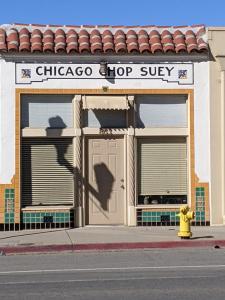Whenever Jan and I find the time to wander up the coast, one of our favorite spots to pause is Guadalupe. It’s a tiny town on California 1 at the very northern edge of Santa Barbara county. It bills itself as the “gateway to the Guadalupe-Nipomo Dunes.”
A poor town. Used and abused. And yet. Somehow. Survives.
Walking down the principal street, Guadalupe, one never knows what will capture the eye. Actually when I posted that small essay about the street shrine, a Zen friend who grew up on the Central Coast let me know about La Pasadena Oaxaqueña. It’s officially on our list for our next visit. Or, if the timing is bad, the one after that. We are not done with this town.
I wrote in my reflection on the street shrine dedicated to our lady that Guadalupe is a town of history, which means a town of sadnesses as well as joys. Since the missions arrived in 1787 the area has mostly been about agriculture. The fertile land has been a gathering place for many different peoples, starting with Chumash, and then the Spanish, and the evolving Mexican cultures, other Europeans, Filipinos, Chinese, and Japanese.
One of the buildings on Guadalupe street that I find endlessly fascinating is a stand alone building with the name “Chicago Chop Suey.” It may be occupied as a home, it does not appear to be any kind of business. But the facade is kept clean and painted. I’ve googled it a few times over the years and mostly I get blog posting from people like Jan and me who stumble upon it, google around, and are left with a few other people’s pictures of the building. And that’s pretty much it.
Well except for a quote I’ve found a couple of times:
“According to a map showing the locations of Japanese American-owned businesses in 1940, this was originally New York Chop Suey. The building was constructed in 1926.”
As chop suey is a traditional Chinese-American concoction, it’s interesting and confusing that it was owned by Japanese or Americans of Japanese descent. The Japanese population was interned in 1942. A couple of white allies tried to guard some of their buildings, particularly their Buddhist temple, but were eventually run out of town. After which what wasn’t taken over was vandalized, often beyond repair.
And.
There’s this building.
A story waiting to be told…













